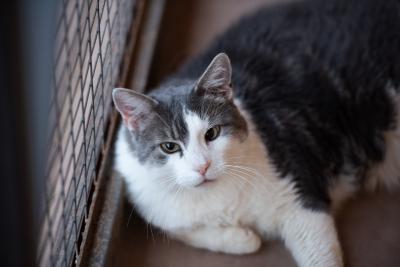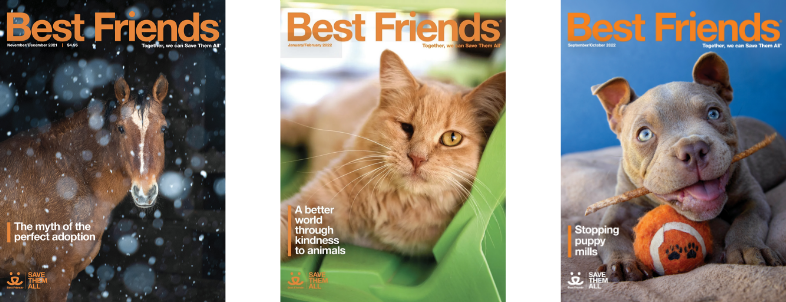Touch-sensitive kitty blossoms in foster home

It could be argued that Highway’s peepers are among the most adorable we’ve ever seen. And his sweet chirpy meow and endearing headbutts just add to his charm.
He’s often found cuddling with caregivers and lounging on desks — reminding them to take breaks to pet him. (Hey, it’s the least he could do.) But Highway didn’t always enjoy the attention he relishes now.
When he arrived at Best Friends Animal Sanctuary, he was unsure of people and didn’t like to be touched. While he still has preferences about how and when he’s touched (don’t we all), he’s made significant progress — progress that a foster home helped, well, foster.
Lisa Anderson, one of Highway’s caregivers, brought him to her place while his home-between-homes at the Sanctuary’s Cat World was undergoing renovations. “Fostering helped him blossom,” says Lisa. “He’s come such a long way. He loves people and just wants to be around you. When he was at my house, he always followed me around.”
[Cat goes from touch-me-not to grumbly biscuit maker]
However, it was worrying when Best Friends veterinarians diagnosed Highway with diabetes. How do you administer lifesaving insulin shots to a cat who is sensitive to touch? “We distract him with tasty treats and just give the injection quickly,” says Lisa. “He trusts us now to allow physical contact and treatment for diabetes.”
Highway’s resilience and capacity for love is a testament to his remarkable spirit. And while it may seem obvious, we’ll say it anyway: Highway is clearly on the — ahem — road to healing.

This article was originally published in the September/October 2024 issue of Best Friends magazine. Want more good news? Become a member and get stories like this six times a year.
Let's make every shelter and every community no-kill in 2025
Our goal at Best Friends is to support all animal shelters in the U.S. in reaching no-kill in 2025. No-kill means saving every dog and cat in a shelter who can be saved, accounting for community safety and good quality of life for pets.
Shelter staff can’t do it alone. Saving animals in shelters is everyone’s responsibility, and it takes support and participation from the community. No-kill is possible when we work together thoughtfully, honestly, and collaboratively.







